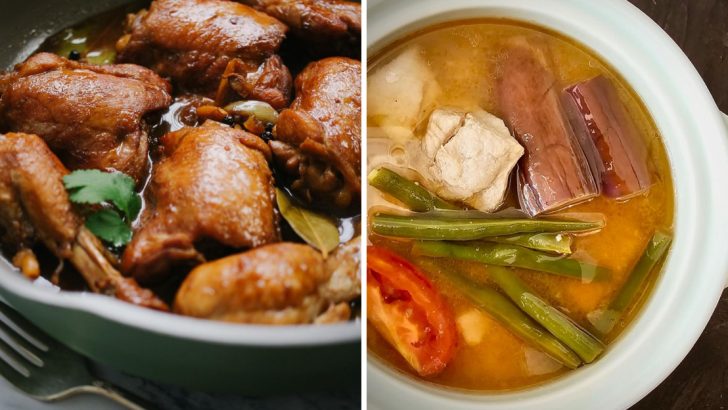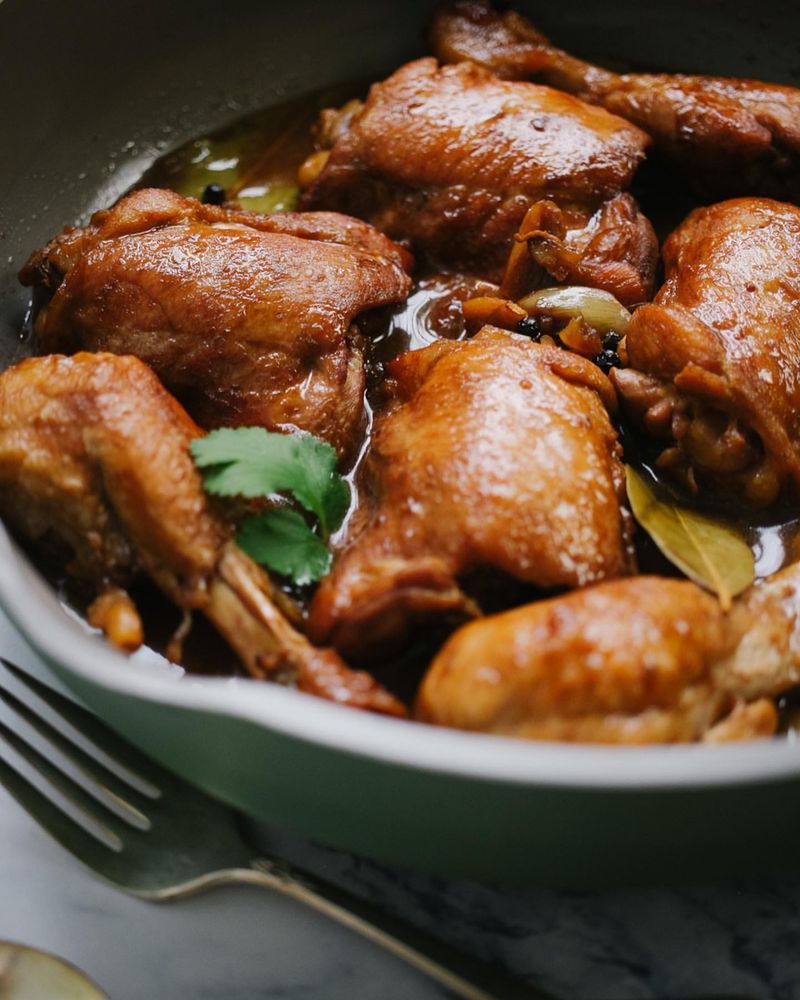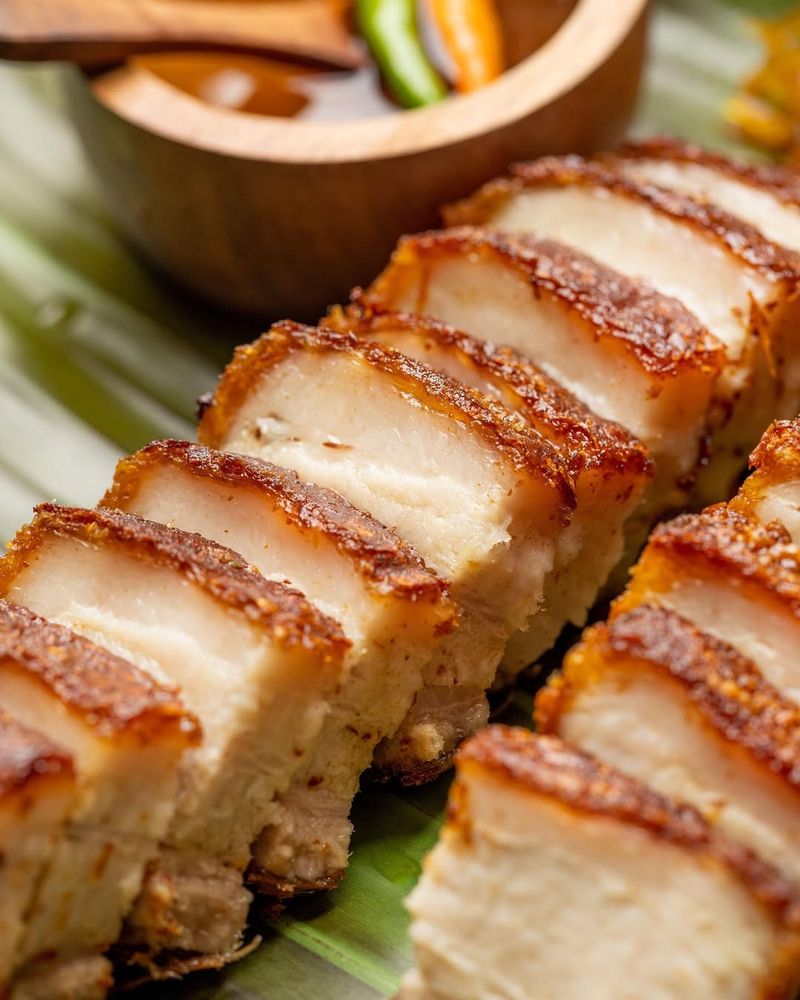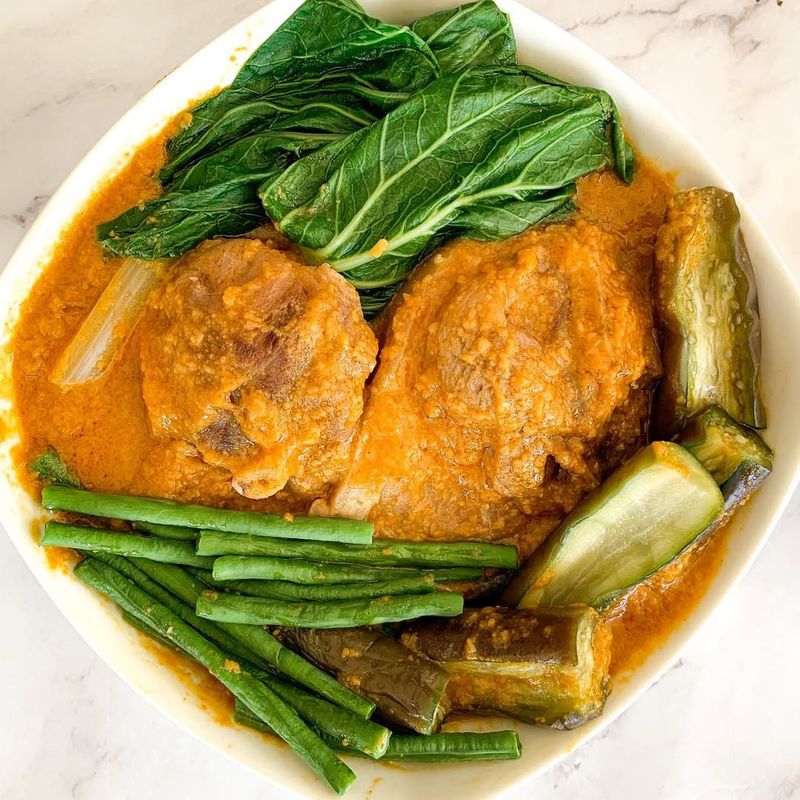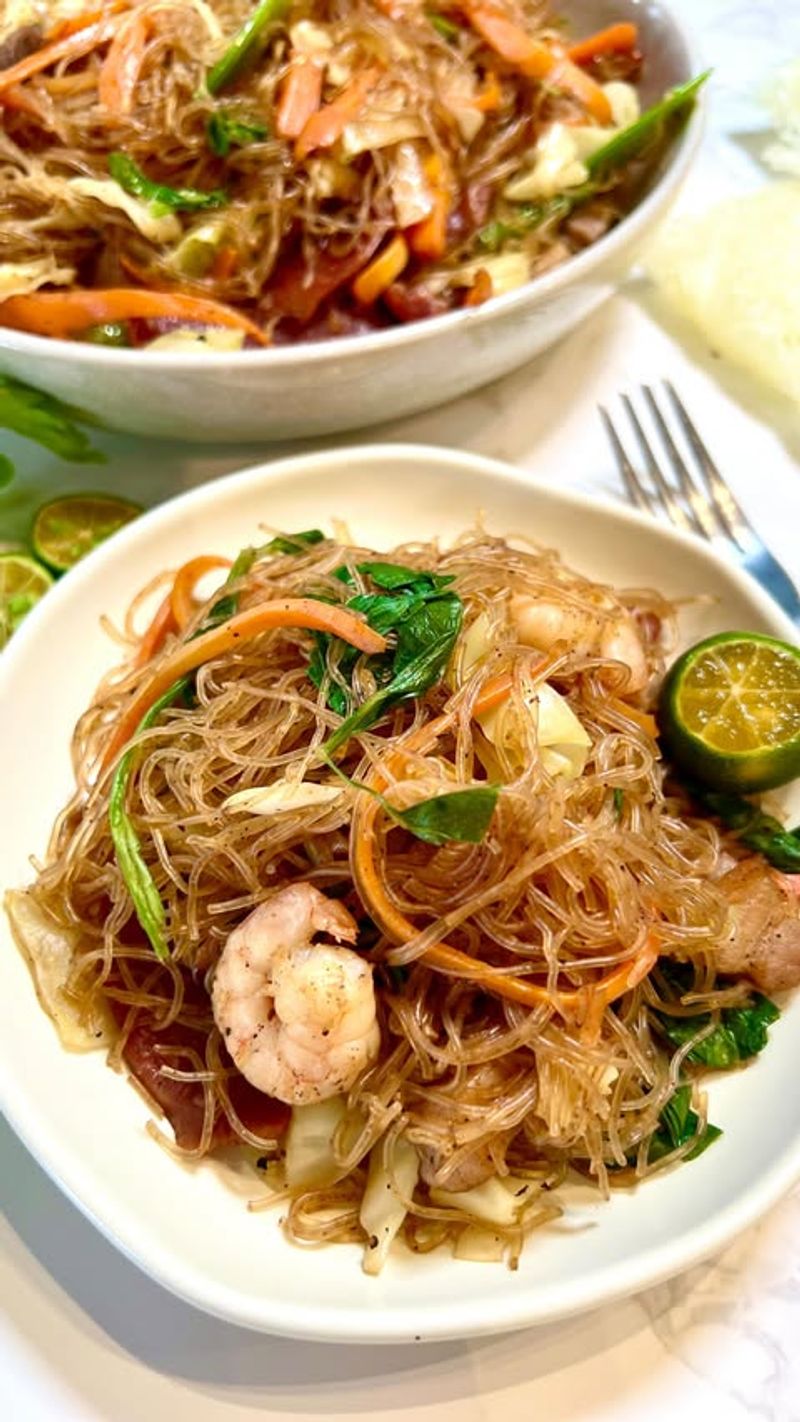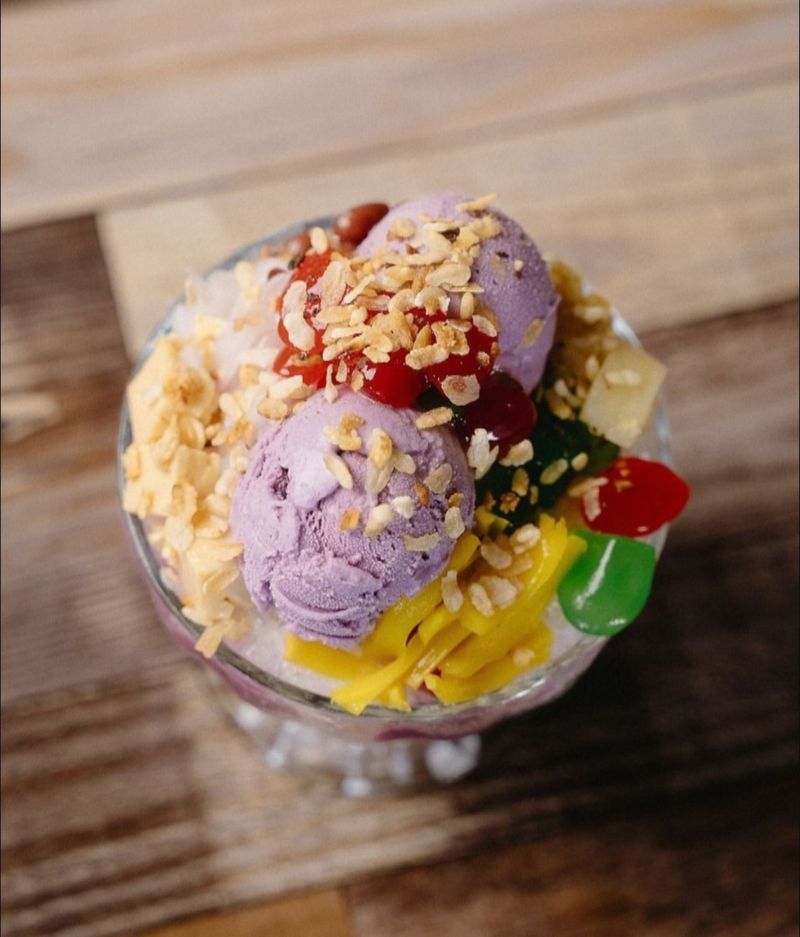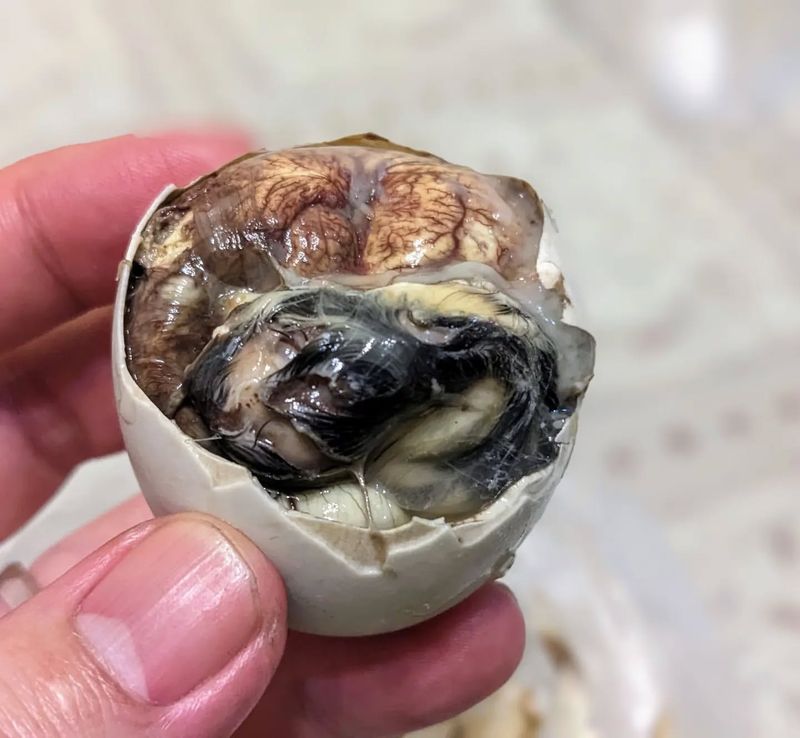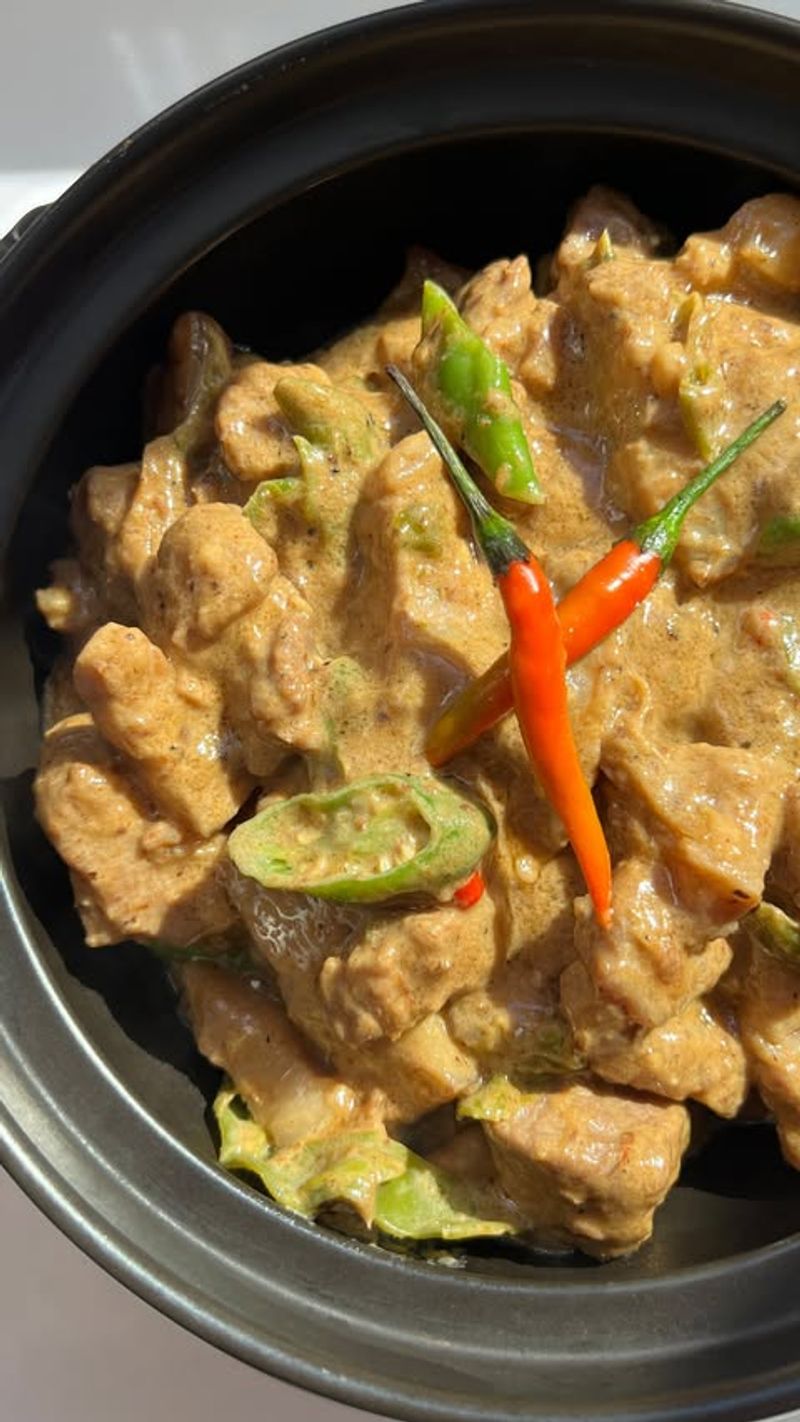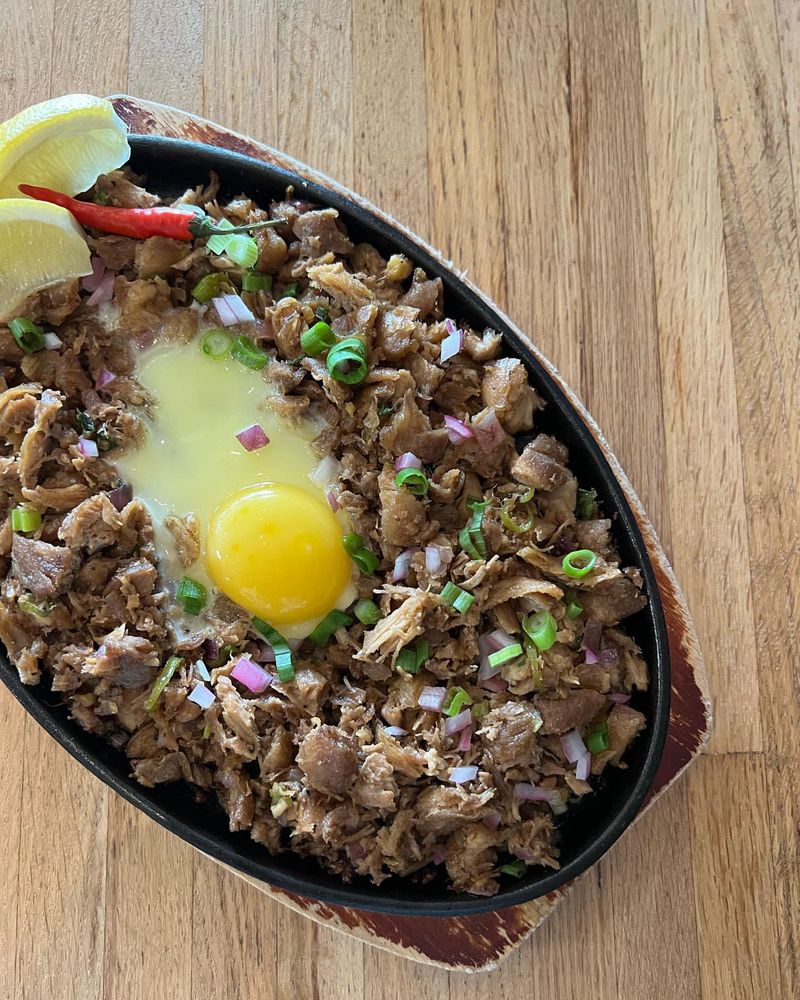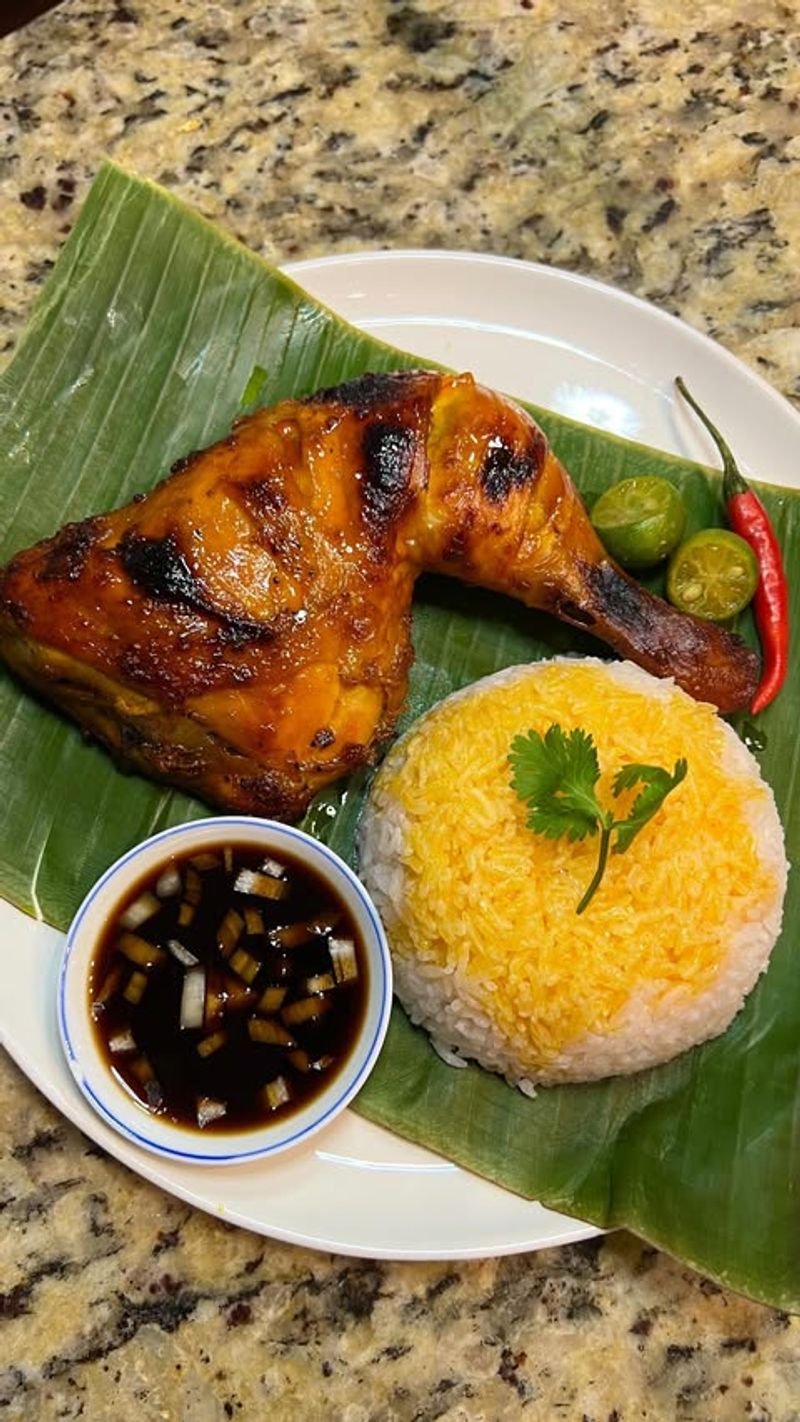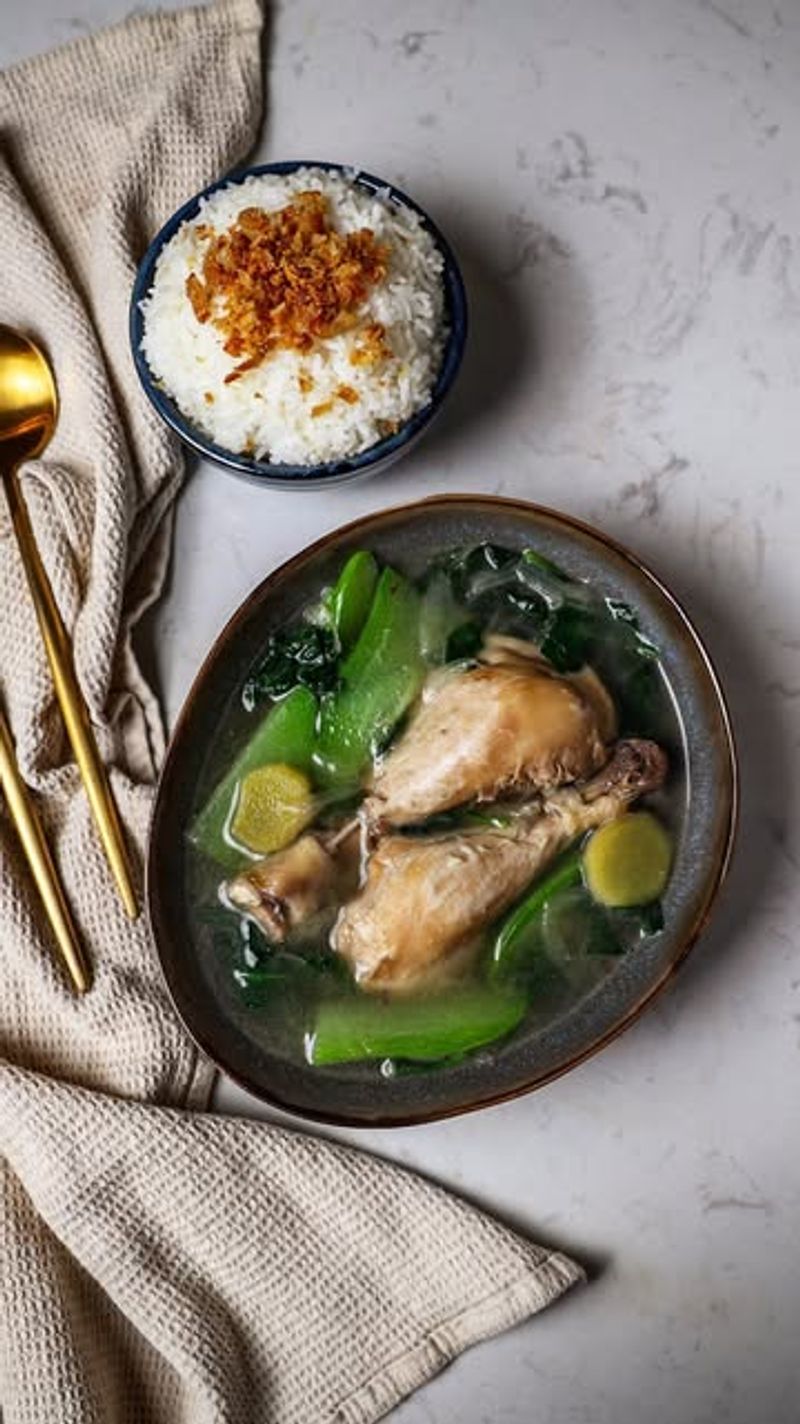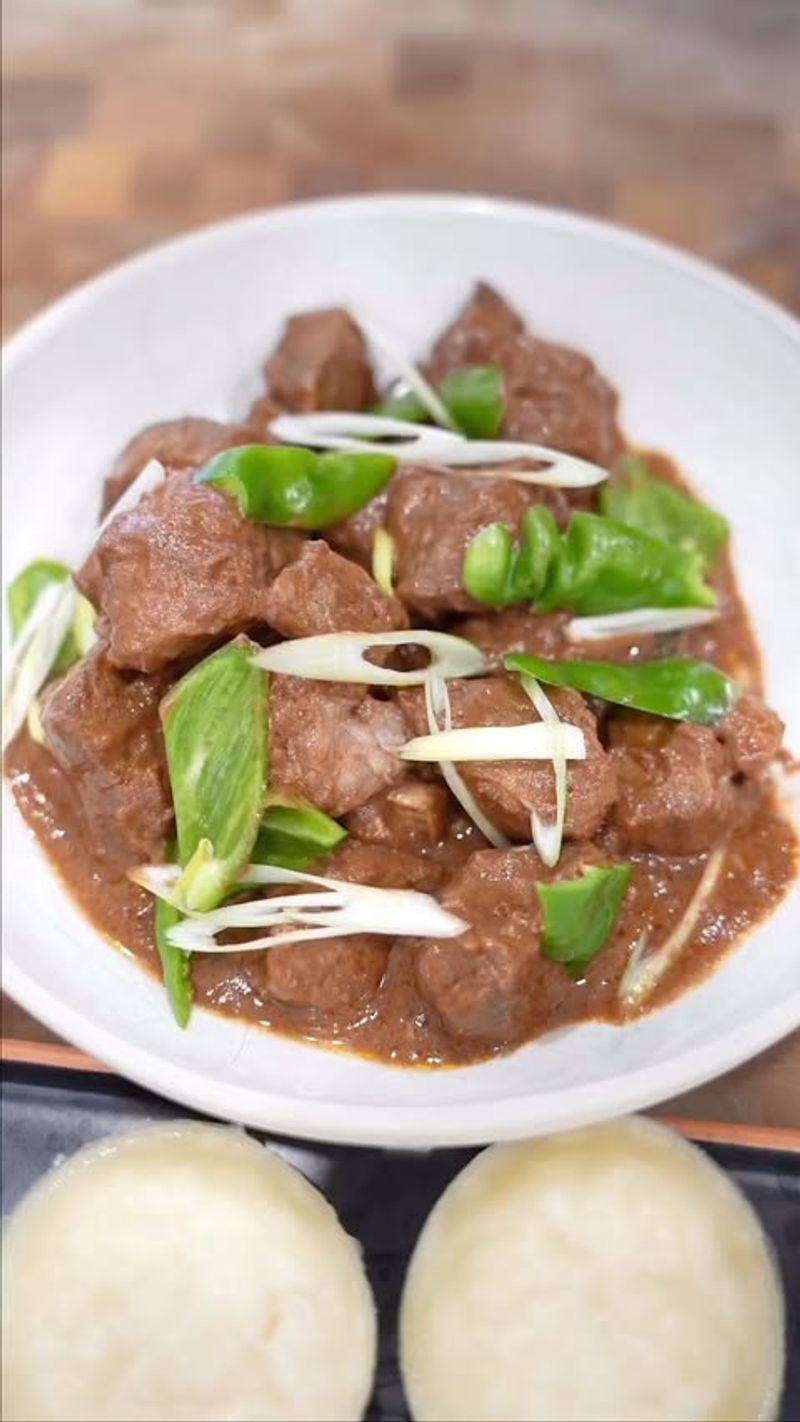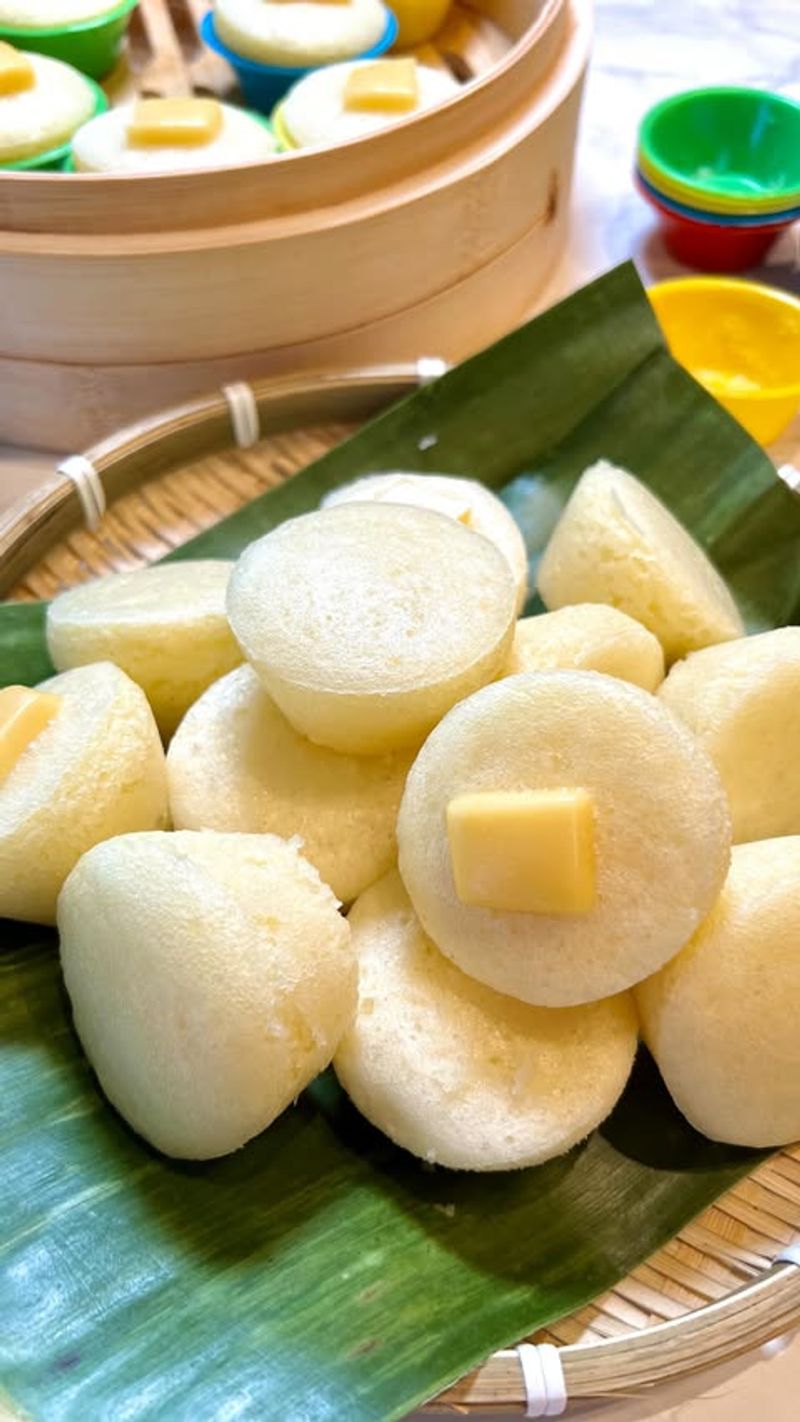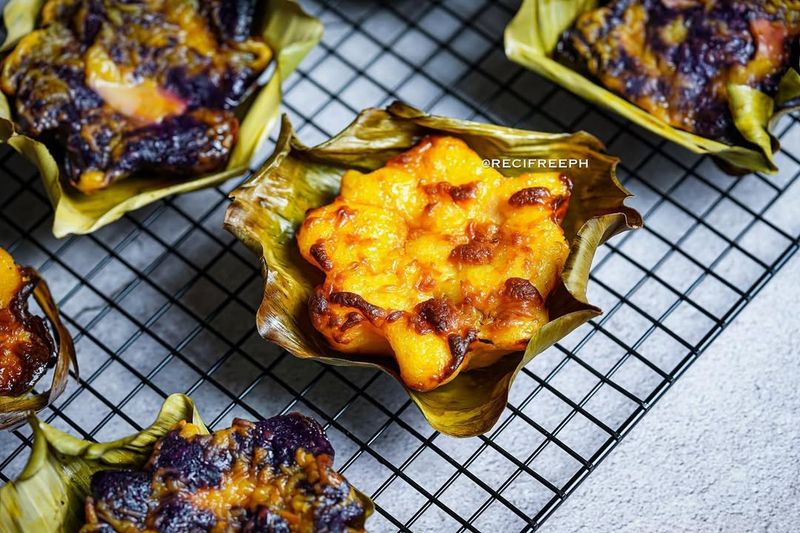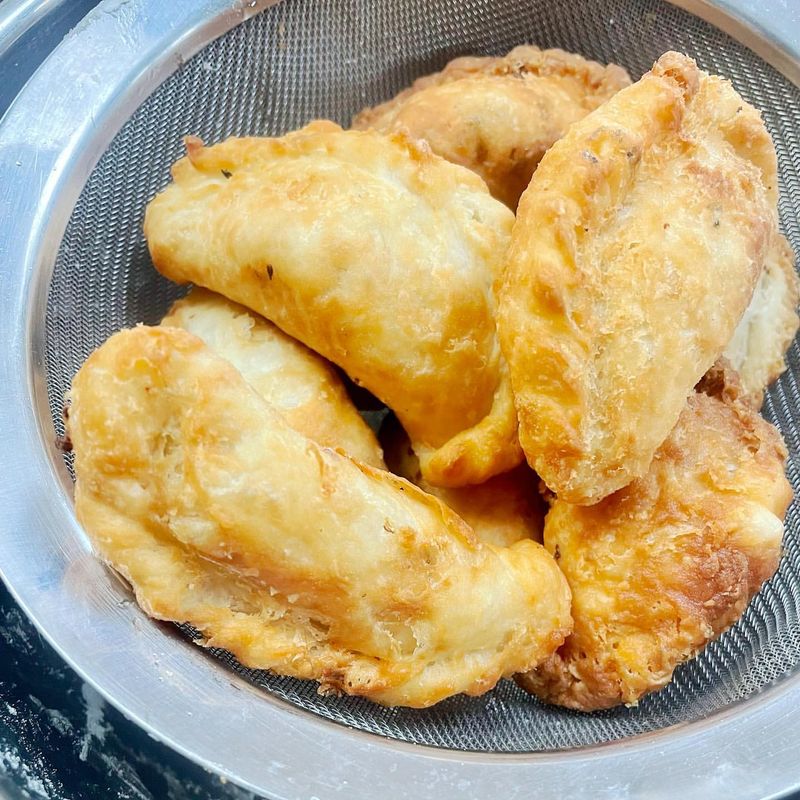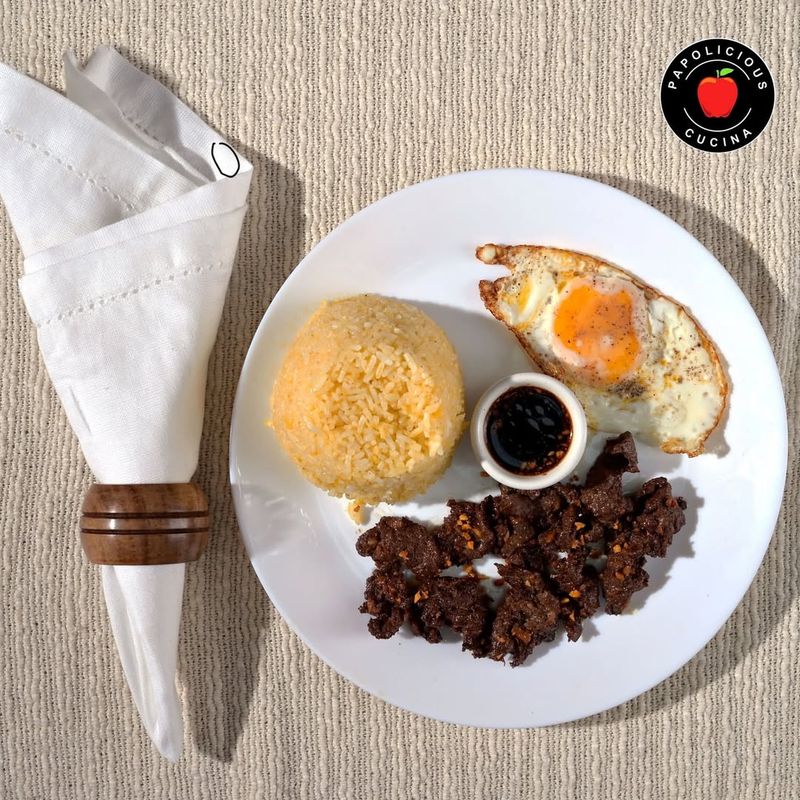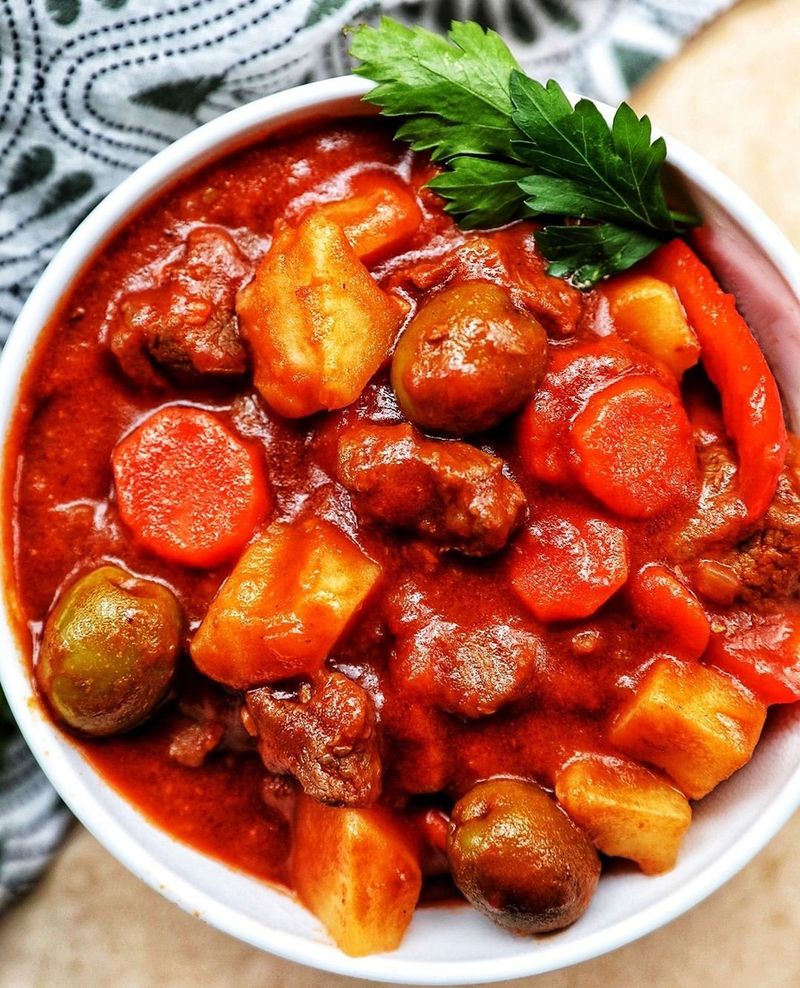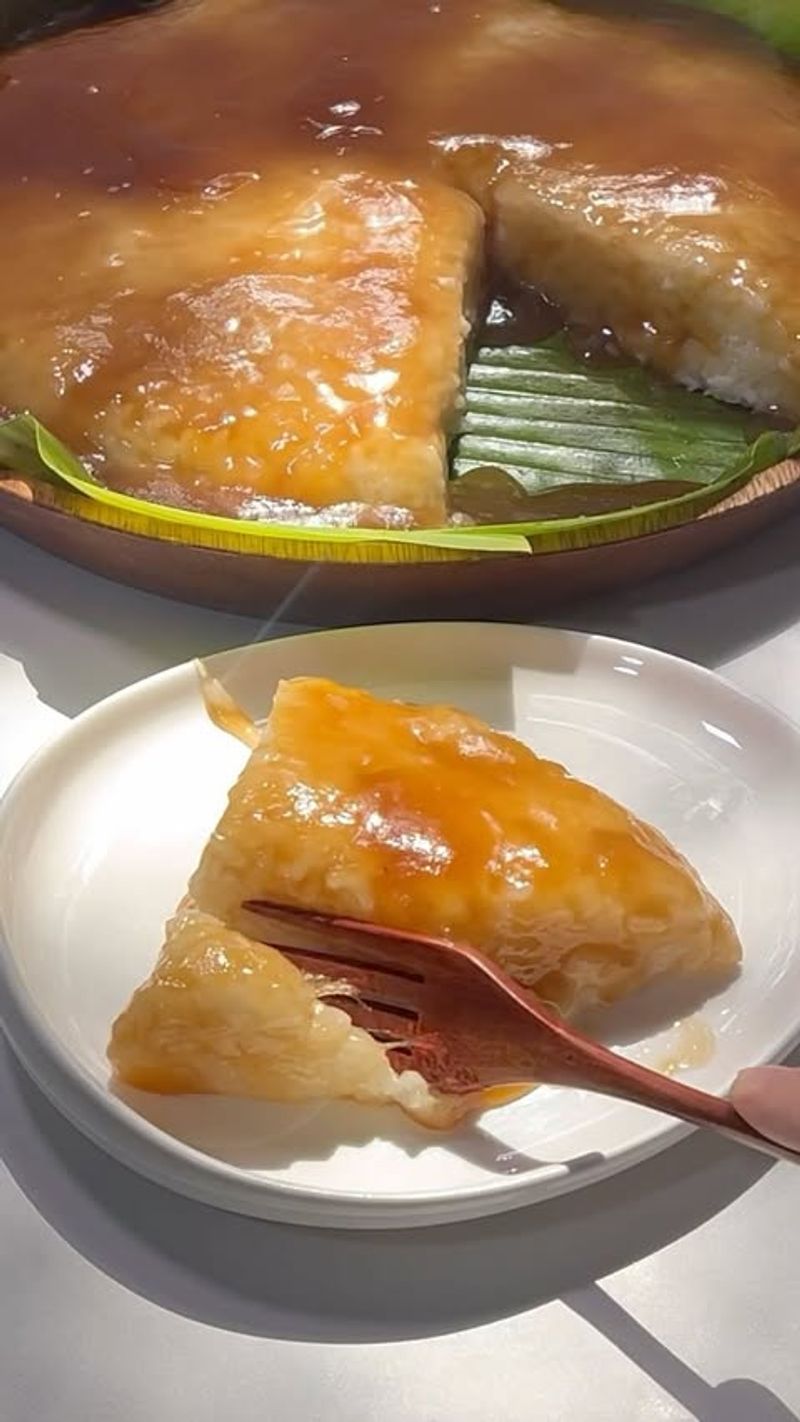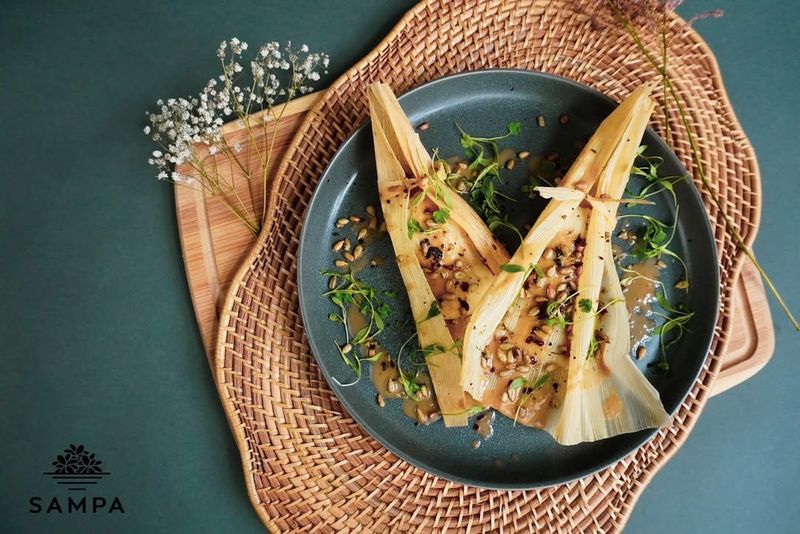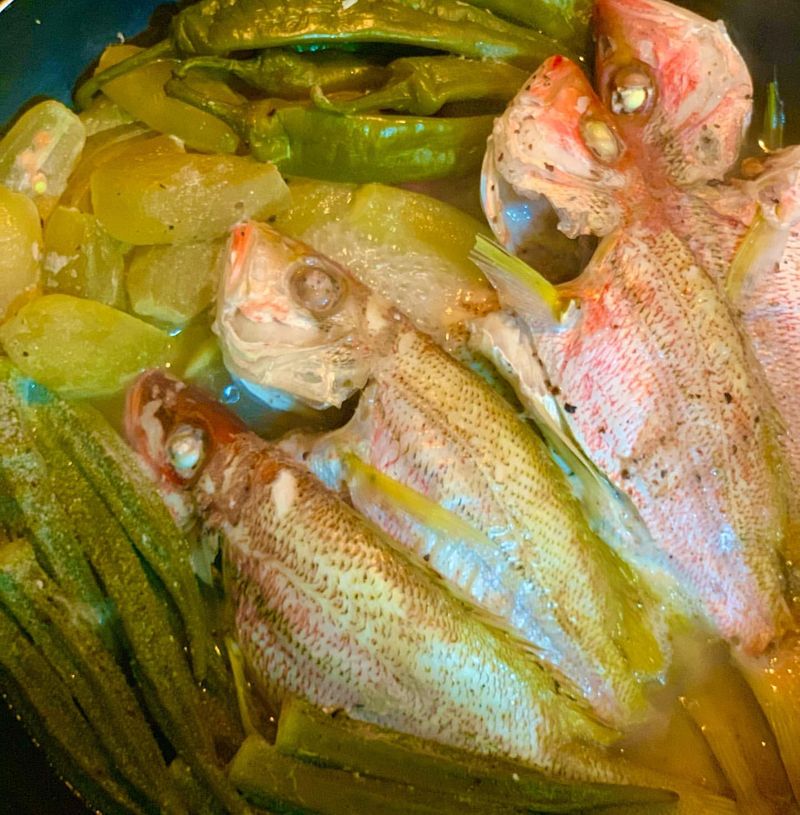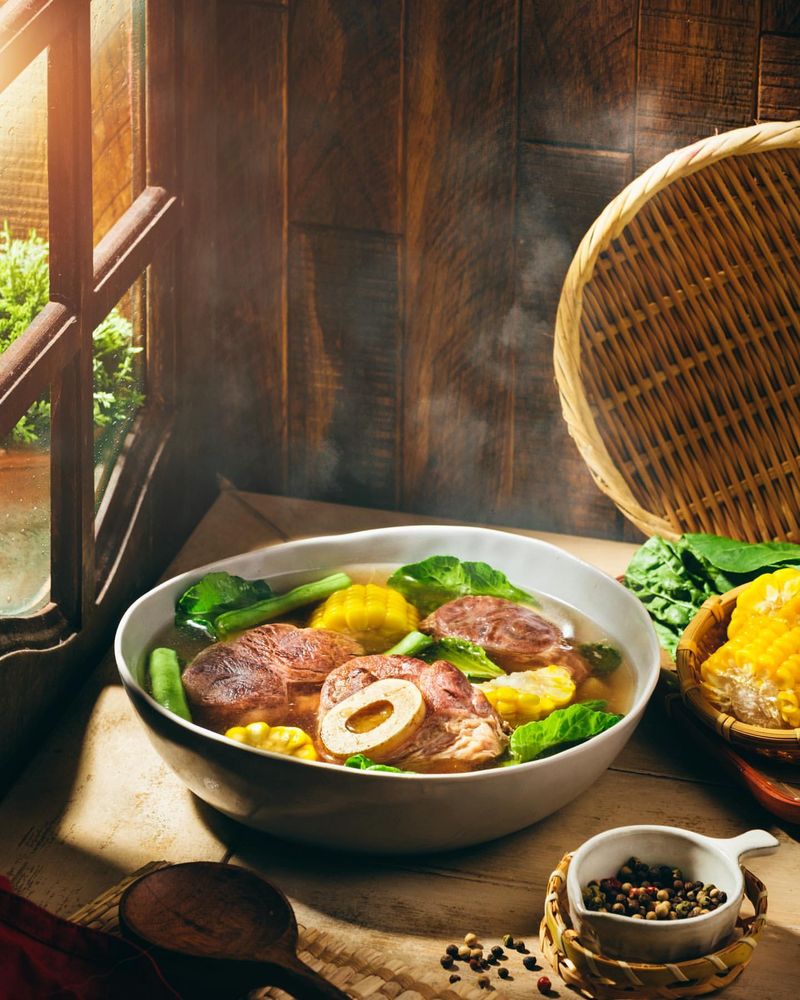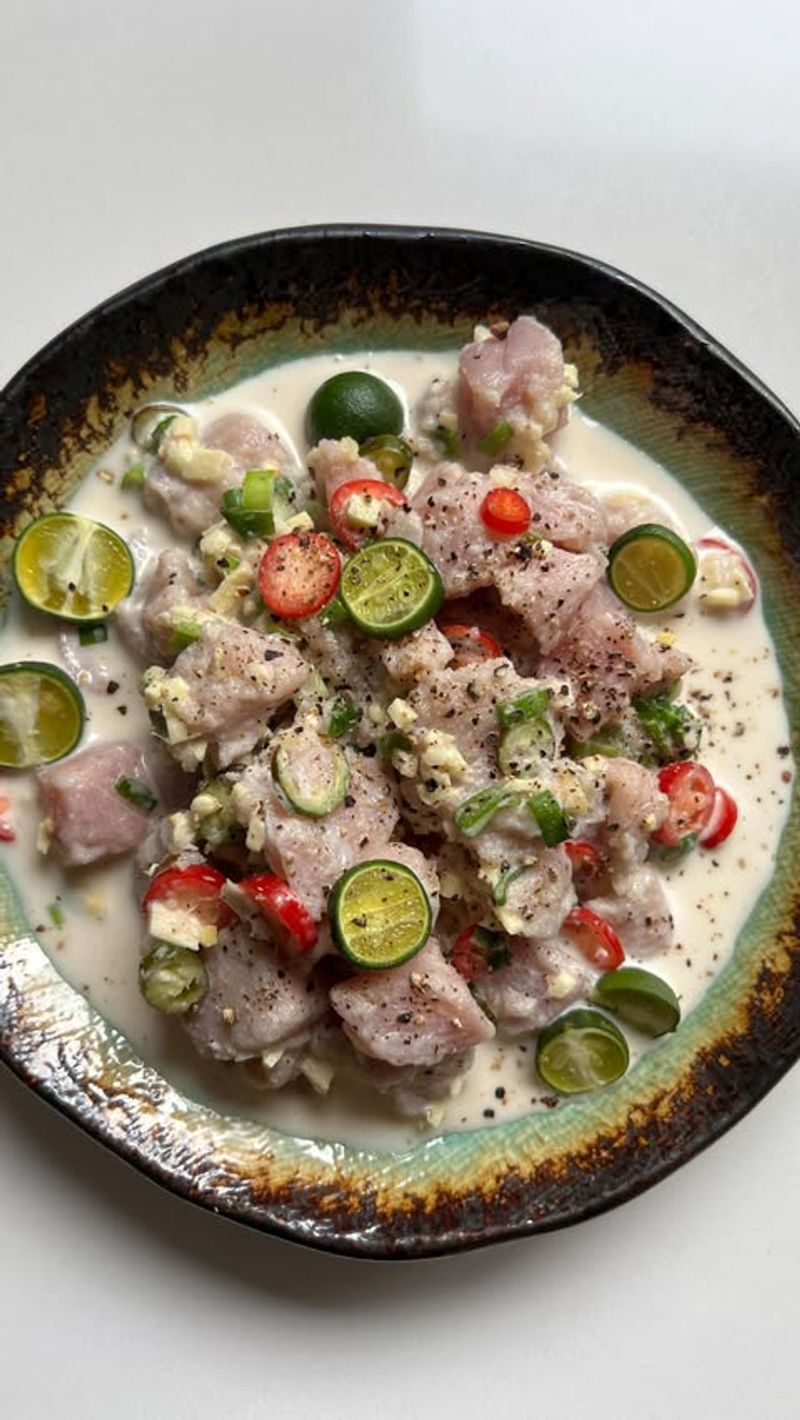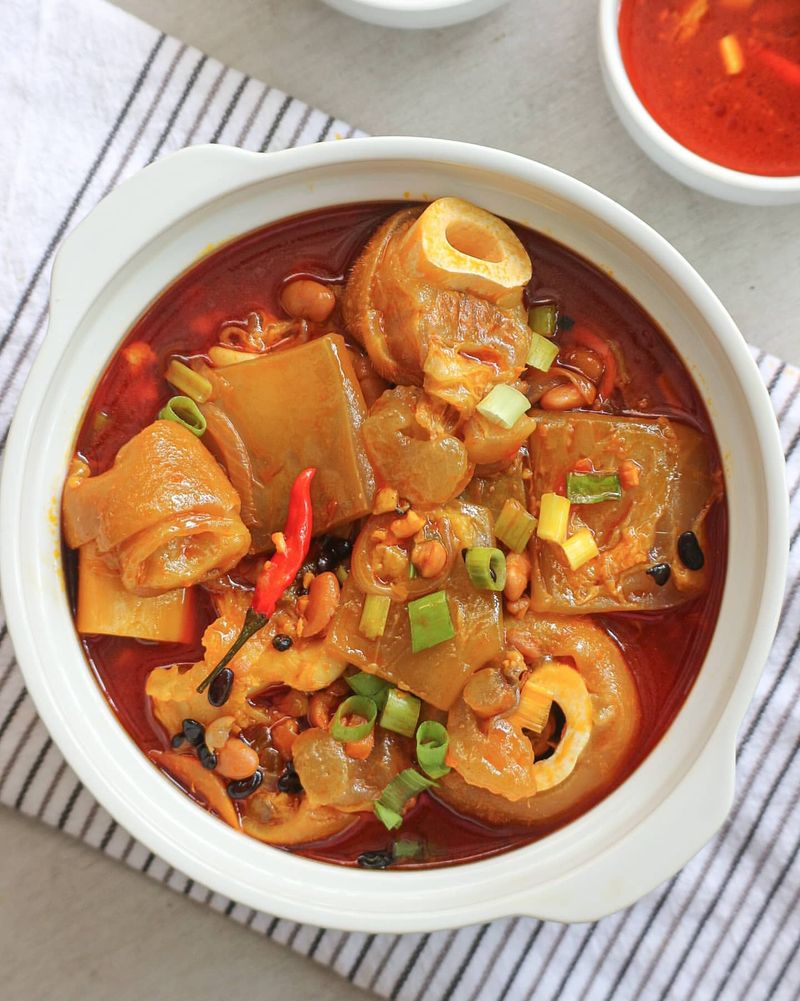When in the Philippines, your taste buds are set for an adventure. Filipino cuisine is a tapestry of flavors bursting with history and culture.
From bustling city streets to tranquil beachside eateries, each dish tells a story. Imagine dining on crispy pork belly, tangy tamarind soups, or sweet coconut desserts. Trust me, there’s nothing quite like it!
1. Adobo
Unofficial national dish of the Philippines, and for good reason. This savory-sweet concoction of soy sauce, vinegar, garlic, and spices is a symphony of flavors. Imagine tender chunks of chicken or pork simmered to perfection, each bite melting in your mouth.
While enjoying adobo, the aroma alone transports you to a Filipino kitchen bustling with activity. You can relish it with steaming white rice, enhancing its rich, tangy notes. Every family has its own version, making it a dish filled with personal twists and treasured secrets.
2. Sinigang
A beloved Filipino sour soup, typically made with pork and a medley of vegetables. The unique tanginess comes from tamarind, creating a comforting yet invigorating dish.
As you take a sip, the sourness awakens your senses, followed by the savory depth of the broth. It’s a homey blend of flavors that reminds one of family gatherings.
Paired with rice, it’s a heartwarming meal that reflects the Filipino knack for balancing tastes. Whether on a rainy day or sunny afternoon, sinigang is pure comfort in a bowl.
3. Lechon
Lechon is the star of every Filipino celebration, a true showstopper. This whole roasted pig is famous for its crispy skin and succulent meat. Picture the golden hue and the irresistible crunch.
The process is an event in itself, with the pig slowly roasted over an open flame for hours. As the aroma wafts through the air, the anticipation builds.
Served with liver sauce, each piece boasts a delightful contrast of textures. It’s the epitome of Filipino festivities, making any occasion feel grander with its presence.
4. Kare-Kare
Kare-Kare is a Filipino classic, a stew rich with peanut sauce and hearty meats. Think oxtail and tripe, tender from hours of slow cooking, mingling with vegetables.
This nutty dish, traditionally paired with bagoong, is a feast for the senses. The creamy sauce coats each morsel, offering a warm, comforting embrace.
Perfect for family meals or celebrations, it’s a dish that speaks to tradition and togetherness. Its unique flavor profile makes kare-kare a memorable experience for any culinary adventurer.
5. Pancit
Pancit represents longevity and good fortune, making it a must-have at birthdays and celebrations. These stir-fried noodles come alive with chicken, shrimp, and a rainbow of vegetables.
Each forkful is a celebration of flavors and textures, from the soft noodles to the crisp vegetables. The squeeze of calamansi adds a zesty twist, brightening every bite.
Whether you’re trying pancit canton or bihon, each variation offers a unique journey through Filipino culinary innovation. It’s a dish that promises both satisfaction and delight.
6. Halo-Halo
Halo-Halo is a delightful Filipino dessert that translates to “mix-mix.” It’s a vibrant blend of shaved ice, sweet beans, jellies, and fruits, crowned with leche flan and ube ice cream.
Digging into halo-halo is a joyful experience as you uncover new flavors with each layer. The creamy ice cream melting into the icy mix creates a refreshing treat.
Just what beating the tropical heat needs. Halo-halo is a celebration of color and taste. It’s a sweet adventure that captures the essence of Filipino hospitality and creativity.
7. Balut
It might be one of the most adventurous eats on your culinary journey in the Philippines. This fertilized duck egg is a traditional street food, enjoyed with a pinch of salt and vinegar.
For the brave-hearted, the first bite can be a testament to their adventurous spirit. The broth inside the egg is rich, and the texture is unique.
It’s a dish that sparks conversation, often daring friends to try it. Embrace the experience, and you’ll find it’s a story worth sharing with fellow food adventurers.
8. Bicol Express
A fiery favorite from the Bicol region, known for its spicy kick and creamy coconut base. Tender pieces of pork and shrimp swim in this luscious sauce, with green chili peppers adding the heat.
The dish is a wild ride for your taste buds, combining spiciness with the coolness of coconut milk. It’s a culinary adventure that challenges and excites.
If you love spicy food, this dish will be a highlight of your trip. It’s a delicious testament to the bold flavors of Filipino cuisine.
9. Sisig
Sizzling sensation from the city of Angeles, Pampanga. Made from pig’s head and liver, it’s chopped into bits and served on a hot plate with onions and chili.
The crackling sound and enticing aroma as it arrives at your table makes it an irresistible treat. Mix in a raw egg for extra creaminess and richness.
It’s a dish best shared with friends over a cold drink, embodying the spirit of Filipino camaraderie and enjoyment. Sisig is a must-try for those seeking bold flavors.
10. Taho
This is beloved Filipino breakfast treat made from silken tofu, sweet arnibal syrup, and tapioca pearls. Often sold by street vendors, it’s a morning ritual for many.
Imagine the sweet aroma as the vendor calls out “Taho!” in the neighborhood. Served warm, it’s comfort in a cup, perfect for starting the day on a sweet note.
The combination of silky tofu and chewy pearls is a delightful texture contrast. It’s an iconic street food experience that leaves a lasting impression.
11. Lumpia
Filipino spring rolls that combine crunchy goodness with savory fillings. Typically filled with vegetables, meat, or a combo, these rolls are fried to golden perfection.
The satisfying crunch as you bite into lumpia is complemented by the sweet and sour dip that accompanies it. It’s a party favorite, often disappearing as soon as it hits the table.
Whether served as an appetizer or snack, lumpia is a versatile dish that never fails to please. They’re an essential part of any Filipino feast, adding joy to every gathering.
12. Inasal
Inasal hails from the city of Bacolod and is a must-try for any grilled chicken lover. Marinated in spices and grilled to juicy perfection, it boasts a distinct flavor profile.
The aroma of chicken inasal grilling over charcoal is simply irresistible. Served with rice and atchara, a pickled papaya side, it offers a harmonious blend of flavors.
It’s a dish that captures the essence of Filipino BBQ culture, enjoyed best with family and friends. Inasal is a reminder of the simple joys of Filipino dining.
13. Tinola
Tinola is a comforting Filipino soup featuring chicken, green papaya, and leafy greens like malunggay. The broth is clear but packed with flavor from ginger and spices.
Each spoonful offers warmth, perfect for soothing the soul on a breezy day. The combination of tender chicken and the subtle sweetness of papaya creates a balanced dish.
This soup is a staple in Filipino households, served during family meals. Its simplicity and nourishing qualities make it a beloved classic across generations.
14. Dinuguan
A daring dish made with pork and pig’s blood, creating a rich, savory stew. The dark, velvety sauce is infused with vinegar and spices.
For those adventurous enough to try, it offers a unique taste experience, often paired with puto, a sweet rice cake that balances its bold flavors.
It’s a dish that represents the Filipino culinary tradition of ‘no waste,’ using every part of the animal. Dinuguan is an invitation to explore the depth and diversity of Filipino cuisine.
15. Buko Pie
Delectable Filipino pastry filled with young coconut meat encased in a flaky crust. A specialty from the province of Laguna, it’s a sweet treat not to be missed.
Imagine biting into the rich, creamy filling that pairs perfectly with the buttery crust. It’s a slice of tropical heaven that’s both comforting and satisfying.
Often enjoyed as a dessert or snack, buko pie is a perfect souvenir to bring home. Its irresistible flavor makes it a favorite among locals and tourists alike.
16. Puto
Puto are soft, fluffy rice cakes that are a staple at Filipino gatherings. These bite-sized delights come in various colors and are often topped with cheese or salted egg.
With each bite, you experience a subtle sweetness that pairs well with savory dishes. They’re a common companion to many Filipino meals or enjoyed on their own as a snack.
Puto’s versatility makes it a cherished part of Filipino cuisine, embodying the playful and celebratory nature of the culture. It’s a simple yet delightful treat for all ages.
17. Chicharon
This is an addictive snack made from deep-fried pork rinds. Its crispiness is unmatched, making it a favorite for those who love a good crunch.
Each piece explodes with flavor, especially when dipped in spiced vinegar. It’s a snack that’s hard to resist, perfect for sharing with friends over drinks.
Whether you’re at a fiesta or a simple gathering, chicharon brings an element of fun and indulgence. This crunchy delight is a testament to the Filipinos’ love for bold, savory flavors.
18. Bibingka
A traditional rice cake often enjoyed during the Christmas season. It’s baked in clay pots, giving it a unique texture and flavor.
Topped with cheese and coconut, each bite is a harmonious blend of sweet and savory. The aroma of bibingka wafting through the air is a nostalgic reminder of festive Filipino holidays.
Served on banana leaves, it captures the rustic charm of Filipino cooking. Bibingka is more than a dessert; it’s a celebration of heritage and warmth, shared with loved ones.
19. Empanada
Empanadas are savory pastries filled with a mix of meat, vegetables, and spices. Popular in the Ilocos region, these hand-held delights are perfect for on-the-go snacking.
The flaky crust and flavorful filling offer a burst of satisfaction in every bite. It’s a taste of home, often bringing back memories of family picnics and gatherings.
Whether on a road trip or exploring local markets, grabbing an empanada is a must. They’re a delicious reminder of the simple pleasures in life, enjoyed by all ages.
20. Laing
A spicy, creamy dish made from taro leaves simmered in coconut milk. It’s a specialty from the Bicol region, known for its bold flavors.
The richness of the coconut milk complements the earthy taro leaves, while chili peppers add a fiery kick. Each bite is a dance of flavors, enticing and satisfying.
Perfect for adventurous eaters, laing is a example of the diverse ingredients found in Filipino cooking. It’s a dish that invites you to explore the depths of Bicolano cuisine.
21. Tapsilog
Tapsilog is a beloved Filipino breakfast plate combining tapa (beef), sinangag (garlic rice), and itlog (egg). It’s a hearty start to the day, packed with flavor.
The marinated beef is tender and savory, while the garlic rice offers a fragrant base. Topped with a sunny-side-up egg, it’s comfort on a plate.
Whether at a roadside eatery or home kitchen, tapsilog is a staple that fuels Filipinos across the nation. It’s a dish that embodies the warmth and energy of Filipino breakfast traditions.
22. Caldereta
Caldereta is a hearty stew made with tender beef, carrots, and potatoes simmered in a tomato-based sauce. It’s a dish that warms the soul and satisfies the palate.
The rich, savory flavors meld beautifully, often highlighting the natural sweetness of the ingredients. It’s a comforting meal that brings families together around the table.
Served with rice, caldereta is a staple in many Filipino households, especially during gatherings. It’s a testament to the country’s love for rich, flavorful dishes shared with loved ones.
23. Pinakbet
A colorful vegetable medley seasoned with shrimp paste, hailing from the Ilocos region. It features eggplant, squash, bitter melon, and more.
Each vegetable is cooked just right, retaining its texture and flavor, while the shrimp paste adds a savory depth. It’s a dish that celebrates the bounty of the land.
Often served with fish or meat, pinakbet is a nutritious and flavorful journey through Filipino agriculture. It’s a staple that reflects the resourcefulness and culinary creativity of the Filipino people.
24. Longganisa
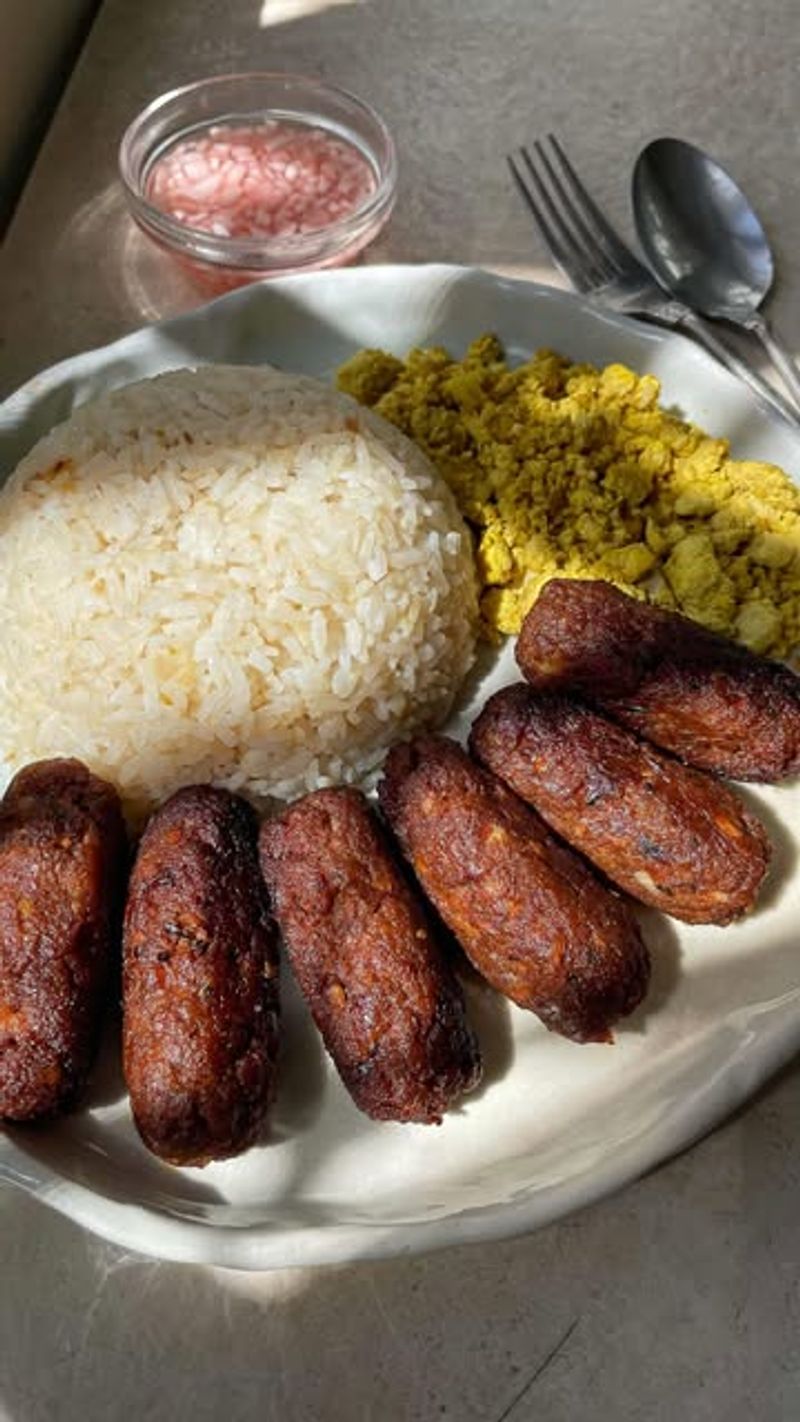
The Filipino version of sausage, with regional variations offering sweet to garlicky flavors. Served with garlic rice and a vinegar dip, it’s a breakfast favorite.
The savory-sweet taste makes each bite delightful, and the vinegar cuts through the richness, providing balance. It’s a comforting start to any day.
Whether you prefer it sweet or garlicky, longganisa offers a taste of Filipino culinary heritage, bringing smiles across breakfast tables. It’s a dish that captures the vibrant spirit of Filipino dining.
25. Bibingkang Malagkit
A sticky rice cake topped with caramelized coconut milk, a sweet delight from the Philippines. Its chewy texture and rich topping are a treat for the senses.
This dessert is a labor of love, often prepared for special occasions and celebrations. The caramelized topping adds a satisfying sweetness that complements the sticky rice.
Enjoyed best with family, it’s a dish that evokes warmth and togetherness. Bibingkang Malagkit is a sweet reminder of the joyful spirit of Filipino festivities and gatherings.
26. Tamales Pampanguena
Tamales Pampanguena is not your average tamale. This delightful dish from Pampanga boasts a unique blend of ingredients wrapped in banana leaves. Inside, you’ll find rice flour mixed with coconut milk, giving it a rich and creamy texture.
The addition of ground peanuts adds a nutty flavor, while slices of salted egg provide a savory surprise. It’s a perfect balance of flavors that celebrates the region’s culinary heritage.
Enjoy it with a cup of hot coffee or as a snack on its own. Tamales Pampanguena is a must-try for food adventurers.
27. Pinangat na Isda
Pinangat na Isda is a comforting and flavorful fish stew with a tangy twist. Fresh fish is slow-cooked in a savory broth made from tomatoes, onions, and green chilies, resulting in a deliciously sour and spicy dish.
The dish is a staple in many coastal areas, where fresh seafood is abundant. The balance of flavors is key, with the sourness of the tomatoes complementing the spice of the chilies perfectly.
It’s often served with steamed rice, making it a hearty and satisfying meal that brings the taste of the sea to your plate.
28. Kiping
Kiping is more than just food; it’s an artistic expression. These colorful, wafer-like rice wafers hail from Lucban and are a staple during the Pahiyas Festival. Made from rice flour, Kiping is dyed in various colors to create eye-catching patterns.
They are typically used as decorations but can also be grilled or fried and eaten. The texture is crunchy, and the taste is subtly sweet, making it a fun snack for both locals and visitors.
Participating in creating or eating Kiping guarantees a memorable experience that’s as delightful to the eyes as it is to the palate.
29. Batangas Bulalo
This is the epitome of comfort food in the Philippines. This hearty beef soup is made with tender beef shanks, cooked slowly to release their rich flavors into the broth.
Corn on the cob and leafy greens are added, creating a nutritious and satisfying meal. The soup is perfect for cold, breezy days, especially when enjoyed in the highlands of Batangas.
The simplicity of the ingredients highlights the natural flavors, making it a favorite among locals and tourists alike. Pair it with freshly cooked rice for an authentic Filipino dining experience.
30. Tuslob Buwa
Tuslob Buwa is a unique street food originating from Cebu. Picture yourself in a street market, surrounded by the aroma of sizzling garlic and onions. This dish, which means ‘dip in bubbles’, involves cooking a savory sauce made of pig brain, liver, and various seasonings.
The bubbling concoction is then served with rice balls or “puso” for dipping. It’s a communal dish, inviting groups to gather around the pan.
Immerse yourself in this interactive culinary experience that offers both flavor and fun. Perfect for adventurous foodies looking to explore beyond the usual.
31. Kinilaw
The Filipino version of ceviche, offering a refreshing taste of the sea. The freshest raw fish is marinated in vinegar and calamansi, a local citrus fruit, to “cook” the protein.
Its simplicity highlights the quality of the ingredients, making it a favorite among locals and tourists alike. Perfect as an appetizer or a light meal, Kinilaw is best enjoyed by the beach, accompanied by a cold beer.
When trying Kinilaw, ensure the fish is of sashimi-grade quality, as freshness is key to its deliciousness. The tangy, spicy, and slightly sweet profile of this dish will leave your taste buds craving for more.
32. Ginataang Langka
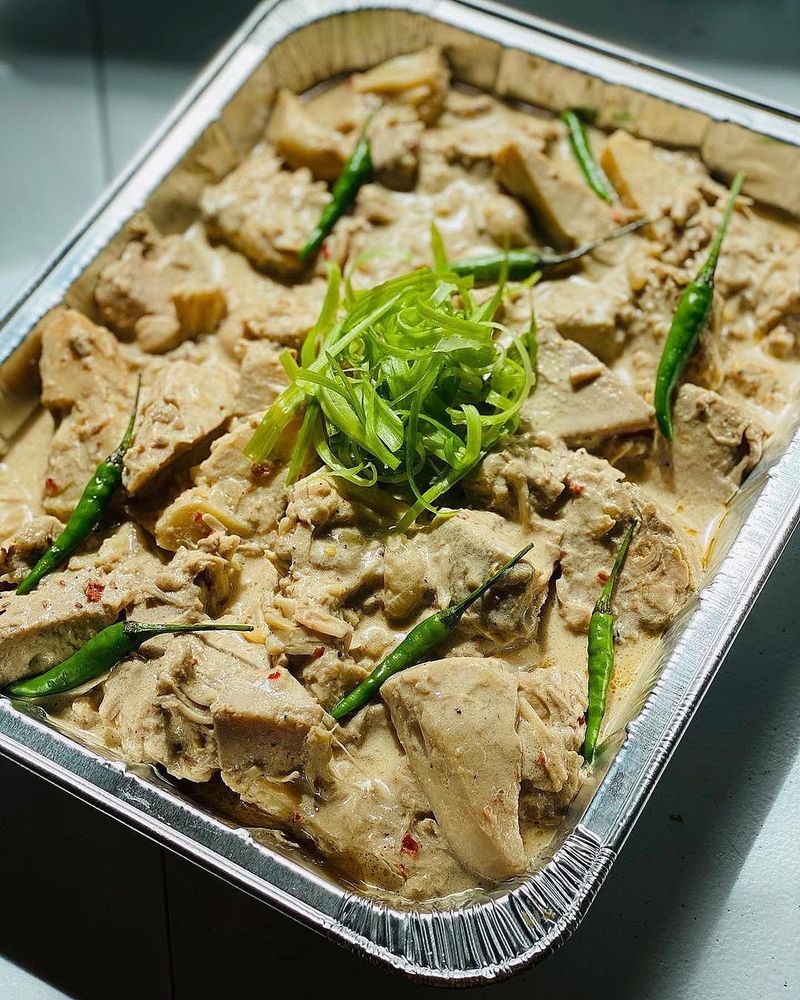
A dish that showcases the use of coconut milk in Filipino cooking. Unripe jackfruit is simmered until tender in a rich coconut milk sauce, often combined with shrimp or pork, and spiced with chili peppers.
The creamy texture and subtle sweetness of the coconut milk pair beautifully with the jackfruit’s unique flavor. This dish is a testament to the versatility of coconut in Filipino cuisine.
Ginataang Langka is usually served with rice and is perfect for those who enjoy a bit of spice in their meals. It’s a comforting and filling dish, ideal for family dinners or festive occasions.
33. Tamilok

If you’re feeling adventurous, tamilok, a woodworm found in mangroves, offers a unique and bold culinary experience. Commonly savored in Palawan, it resembles an oyster in texture and taste.
Served fresh and often with a side of vinegar, this delicacy is a must-try for those who enjoy raw seafood. Eating tamilok is not only about the taste but the thrill of trying something truly out of the ordinary.
Gather with friends to share the excitement and immerse yourself in the rich flavors and cultural heritage of the Philippines.
34. Balbacua
Hearty and flavorful stew that showcases the melting pot of Filipino culinary influences. Originating from the southern regions, this dish is made with slow-cooked beef, often including oxtail, and infused with an array of spices and peanut butter.
The result is a rich and savory broth, perfect for sharing with family and friends.
A bowl of balbacua offers a warm and comforting meal that reflects the warmth and hospitality of Filipino culture, making it an unforgettable gastronomic experience. For an authentic taste, enjoy it with rice.

